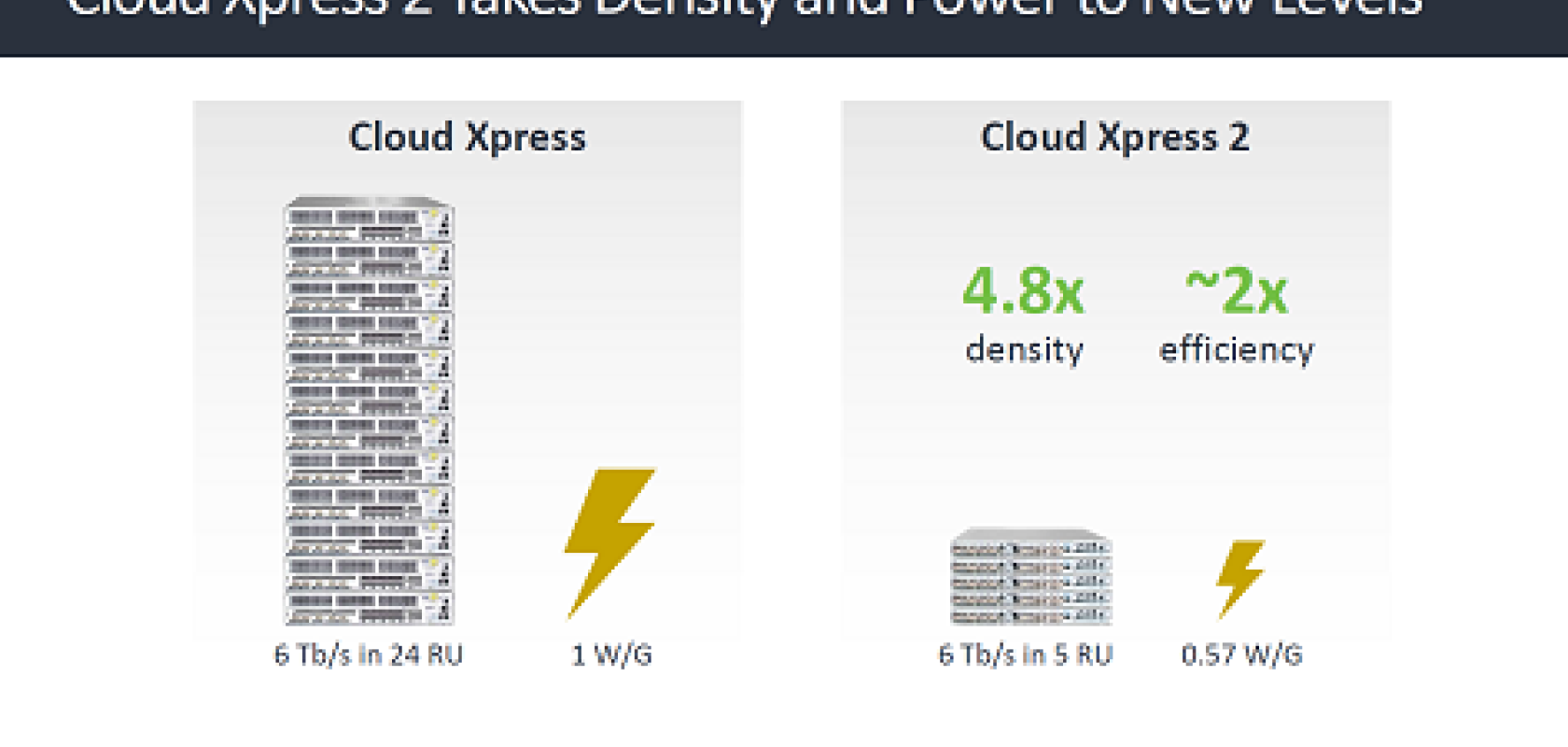Infinera has unveiled the new Cloud Xpress 2, a platform optimised to provide scalable 100G connections for the data centre interconnect (DCI) market.
Cloud Xpress 2 is the first product to use the company’s Infinite Capacity Engine, announced earlier this year (see Infinera generates some buzz: To infinite capacity and beyond). This technology allows Infinera to pack 1.2Tb/s of capacity into a single rack unit, giving the new platform 4.8 times the density of its predecessor.
Featuring built-in optical amplification, a single Cloud Xpress box can transmit 1.2Tb/s up to 130km without an external multiplexer or external amplifier, resulting in fewer boxes, fewer fibres and less requirement for space.
This contrasts with alternative solutions currently on the market that require at least six fibre pairs fed into an external multiplexer daisy chained into an external amplifier to achieve the same capacity, resulting in more complex configuration and ongoing maintenance, Infinera asserts.
The platform is more than just a new optical engine, however; there has been a complete product refresh, says Geoff Bennett, Infinera’s director of solutions and technology.
Such a refresh was becoming overdue, according to Andrew Schmitt, founder and lead analyst at market intelligence firm Cignal AI, who spoke about the DCI market at the Market Focus Forum at ECOC 2016 in Dusseldorf.
Infinera launched the original Cloud Xpress platform in 2014, effectively giving birth to a new category of equipment that would become known as ‘compact DCI’. Thanks in part to its early start, the company has dominated this category of purpose-built platforms, according to Schmitt. But being first to market, Infinera’s platform was also the oldest.
With the release of Cloud Xpress 2, Infinera has leapfrogged its competitors, adding new and improved features that will make it even easier for cloud operators to automate and scale their data centres – with critical capabilities such as topology auto-discovery, zero-touch provisioning support, standard application programming interfaces for programmability and streaming telemetry, and stackability allowing multiple chassis to be managed as a single system.
In addition, the Cloud Xpress 2 has power consumption of just 0.5W per Gb/s, enabled by the lower power consumption of the Infinite Capacity Engine, in combination with the latest generation of internal electronics and more frugal client optics.
Lower power is a critical requirement for hyperscale and other data centre operators. ‘Data centre racks don’t always have as much power available as telco style racks,’ noted Bennett. ‘Having a box that consumes half the power gives us a real advantage.’
Finally, by minimising the number of components in the system and using ultra-reliable PIC technology, Cloud Xpress 2 is designed to be highly reliable.
As cloud data centres are rapidly migrating to 25 Gigabit Ethernet server uplinks and 100 Gigabit Ethernet fabrics between server racks, the demand for platforms that supply scalable simple, secure, and efficient 100G connectivity between data centres can only increase. Infinera looks well prepared for this with Cloud Xpress 2, which also incorporates the company’s unique Instant Bandwidth model, a software-enabled method for activating bandwidth over the pre-installed wavelengths.
Commenting on the announcement, Andrew Schmitt of Cignal AI said: ‘Cloud and content providers are the first to deploy any new technology that helps them better address the rapid growth of their networks. ‘Infinera was first to market with a purpose-built DCI platform that did exactly that, and it essentially owns the market for this type of equipment today. The design of Infinera’s new Cloud Xpress 2 raises the bar again with the density, capacity and operational simplicity that helps cloud and content providers meet the scaling challenge.’
The Cloud Xpress 2 is expected to be in customers’ hands in the fourth quarter of 2016 and generally available early next year.


